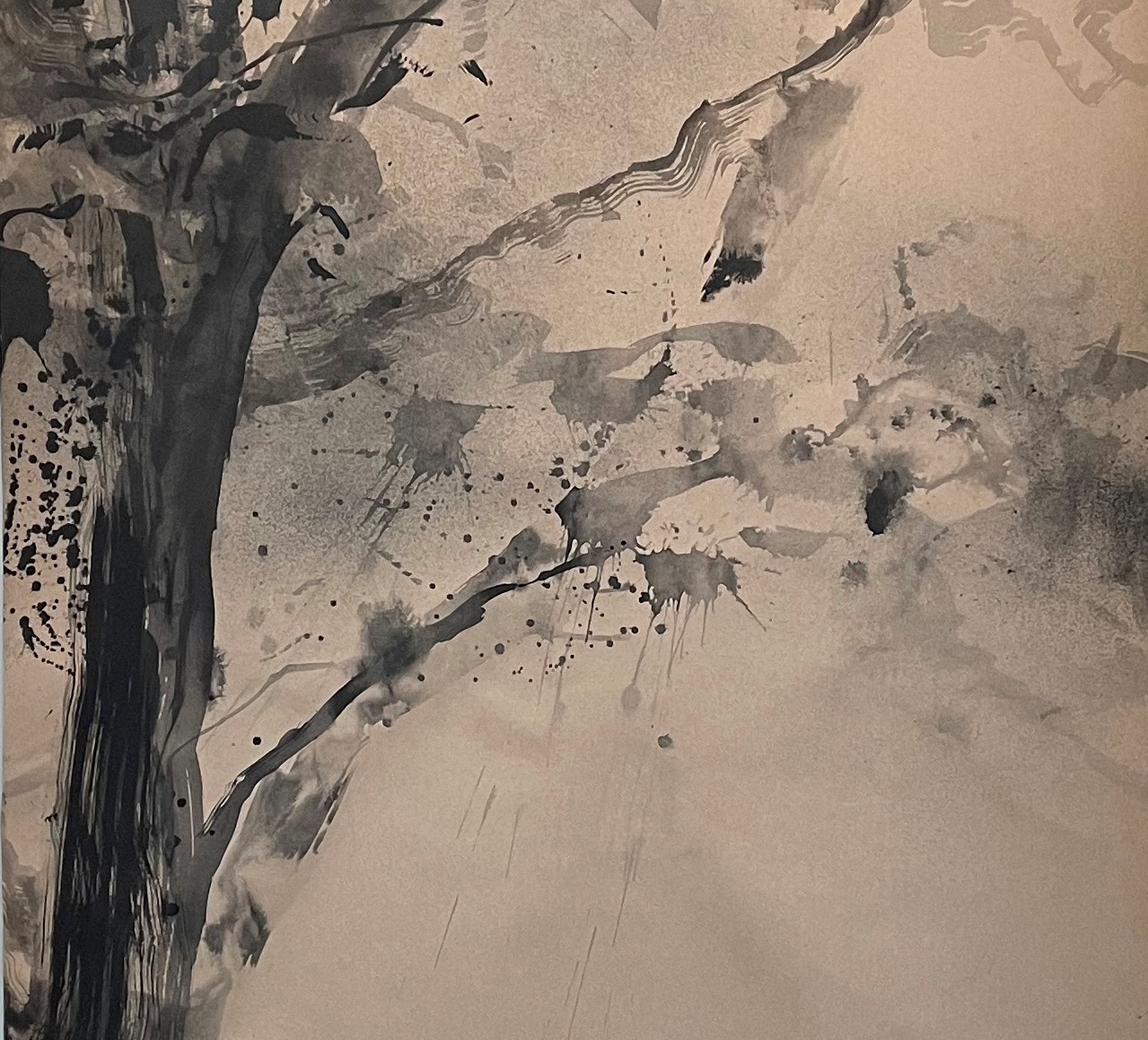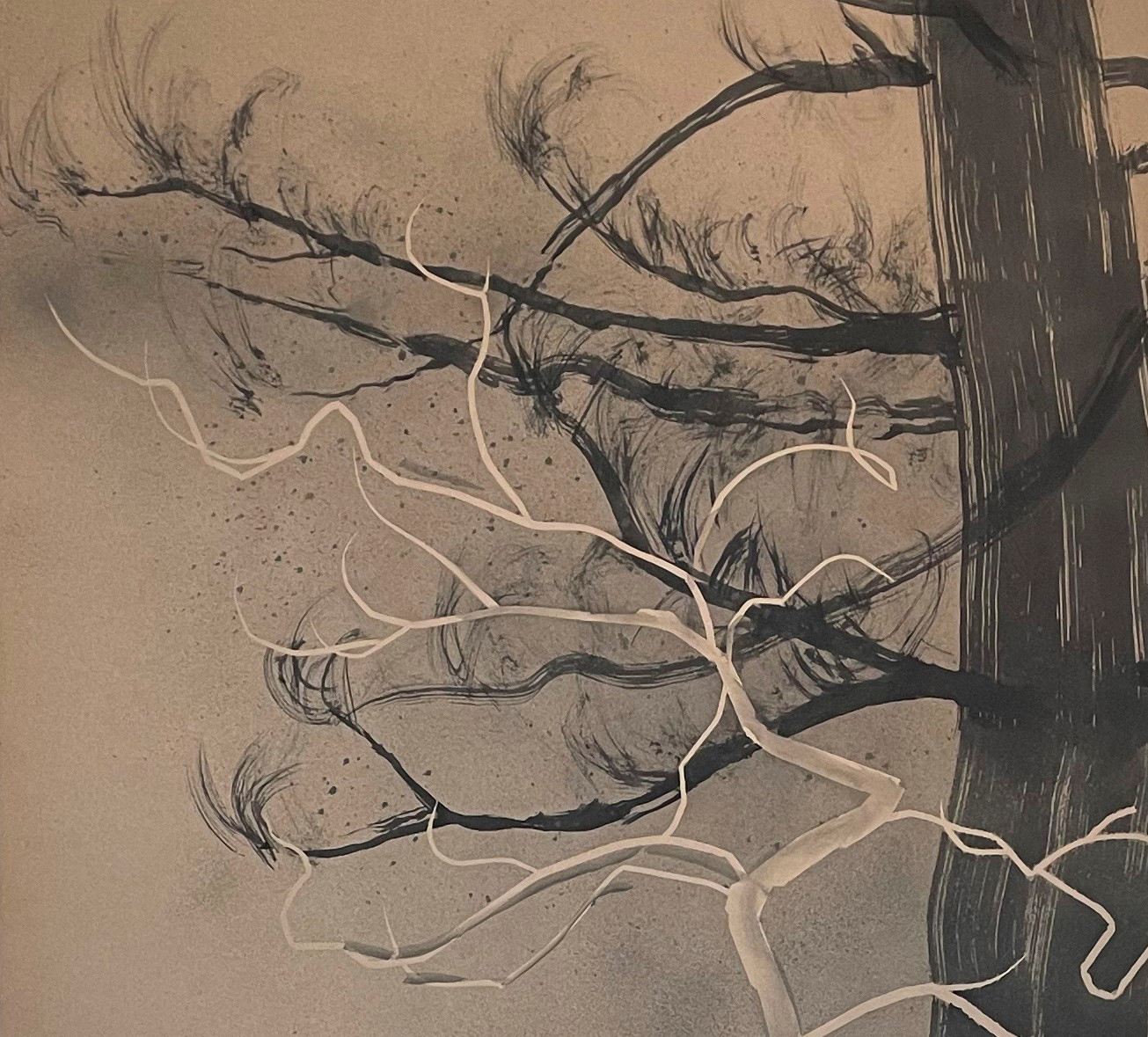Exhibiting Artist Lizi Brown Discusses Her Online Exhibition, Growth Spurts, Knobs and Knuckles: An Environment of Trees
Artist Lizi Brown merges an unabashed simplicity with a draftsperson’s expertise in works featured in her virtual show at the Arnold Arboretum, Growth Spurts, Knobs, and Knuckles: An Environment of Trees (July-October 2021). Brown achieves an affinity with her vision that is applied to her art, lending an often quirky yet always intimate essence to her chosen media of ink and paper. Initially Brown envisioned an installation as its own environment, a surround to bring her unique interpretation of Arboretum trees to each visitor who wandered into her created landscape. In this assembled environment, trees vibrate and twist, reach for the sky, or sink into the loam. Although current health guidelines necessitated a shift to a virtual exhibition, Brown’s Environment of Trees still invites the online visitor to “wander” among her images and explore trees enduring a changing climate.

Q: Many or most of the trees you have depicted in your show are living specimens at the Arboretum. How did the Arboretum and its collections inspire you to develop these paintings?
A: Trees affect where and how I live. The idea of a forest is important for my ability to live in the city. In the Arboretum, I have the time to “be with a tree in a safe place in the middle of the city.” The dynamism, stature, even the gestures are caught in climate shifts and become part of my experience. There is a sense of scale—though not a natural landscape, you can experience the full personality of a tree, as well as marvel at non-natives you wouldn’t see without travel.

Q: You’ve said that as a child you enjoyed a creative environment, using paper, scissors, ink, and paint—the same elements we see in your art for this show! Can you talk a little about the actual process, its evolution, and how the landscape informs the media?
A: I love working sustainably. My relationship is to the landscape, so my media are all non-toxic. I use a brown, heavy-weight contractor paper, which relates to the earth and the warmth of the wood. To work on the very long sheets, which allows this fabulous scale [up to eight feet in length], I built a hip-height table and can walk the length of the piece. My process is to start light using a spray bottle with water and ink, then layer up to dark. I found I could get dozens of tones from the naked paper all the way to black. When a darker black was needed, I used a latex paint and “double black”—the printer’s term to hit again with paint or ink—saturating those areas and spanning the entire spectrum of light to deep dark. To create the light lines (see Beech and White Pine) that reveal the paper’s surface, I use stencils or tape to mask the shapes.

Q: You teach beginning and advanced painting at the School of the Museum of Fine Arts (SMFA) at Tufts University. What do your students teach you?
A: Teaching is great, it made me a better artist. I find I have a deeper understanding of mistakes when I observe students learning. I experience joy in discovering how creative they can be. They try things I wouldn’t think of. During the pandemic I could focus more, so in fact, it was great for me. This was in contrast to the teens [students] who were crazed by it. During the year I learned how to make videos. I shot one on technique to make the work of making art accessible to my students. During COVID, some improved, the virtual aspect allowed them more privacy to take chances in their own space.
Working on these ink paintings is similar, the process is immediate and risky because of the fluidity of the medium. But I have courage and take a chance, jump in, and give it a try.
